Inside Adelaide Uni’s plant accelerator ‘pinkhouse’ at Waite campus
Hikers often stumble across a strange, glowing glasshouse in the foothills, like something out of a sci-fi movie. Let’s go inside.
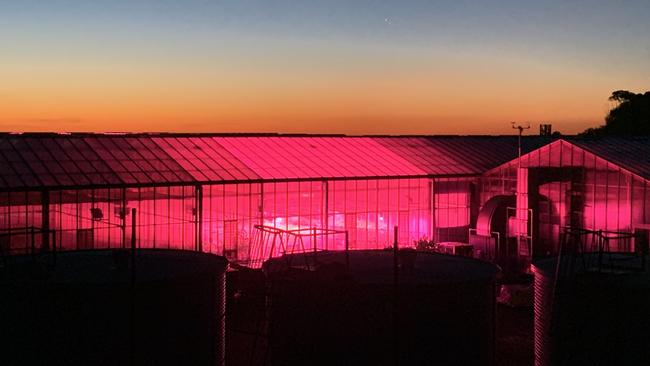
Lifestyle
Don't miss out on the headlines from Lifestyle. Followed categories will be added to My News.
Bushwalkers exploring the base of the Adelaide Hills have been known to stumble across a strange sight at Adelaide University’s Waite campus.
It looks like something out of a sci-fi movie. The huge greenhouse known as the Plant Accelerator glows pink in the dark when LED lights of specific wavelengths are switched on to give the plants a boost.
Associate Professor Bettina Berger said the combination of blue and red light appeared pink.
“If you look at plants, obviously they appear green to the human eye because that is the wavelength they absorb the least, that is what they mainly reflect,” she said.
“The other colours, they are absorbed, which is why we supply red and blue light to them.”
Plant scientists from all over the world come to Urrbrae to experiment on new varieties and manipulate the growing conditions.
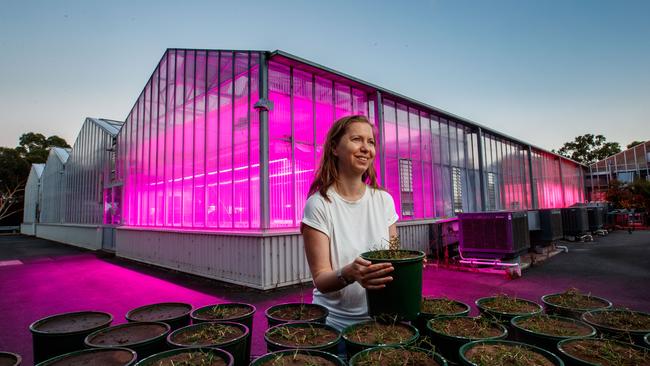
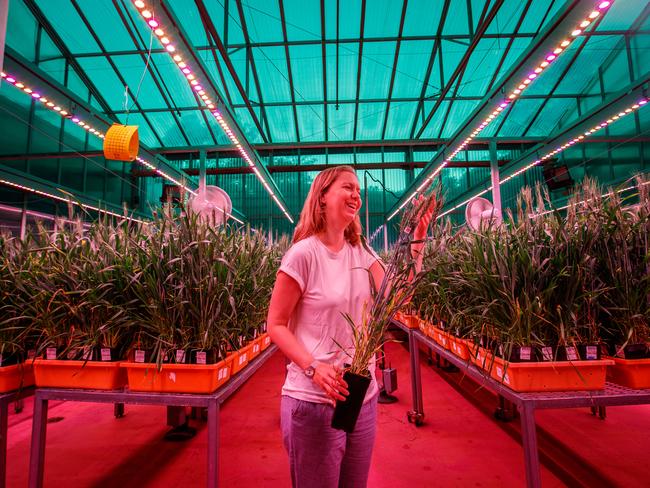
“Depending on the LED type and the proportion of red and blue, for example, and also how long you leave the lights on, you can make sure that plants are shorter in stature, or bushier, or that they remain in a so-called vegetative state for longer,” Prof Berger said.
“Or alternatively, if you’re interested in fast generation times – for example, if you are breeding plants and you want to go quick from one seed to flowering and the next seed – you can obviously have very long days and also slightly change the composition of the red and blue to make the plants go faster from seed to seed.”
Funded by the Federal Government, the Plant Accelerator is available for hire.
It is part of the Australian Plant Phenomics Facility, available to both Australian and international plant scientists.
There is a whole range of plants inside the greenhouse, including wheat, barley, chickpeas, grapevines, rice and even industrial hemp.
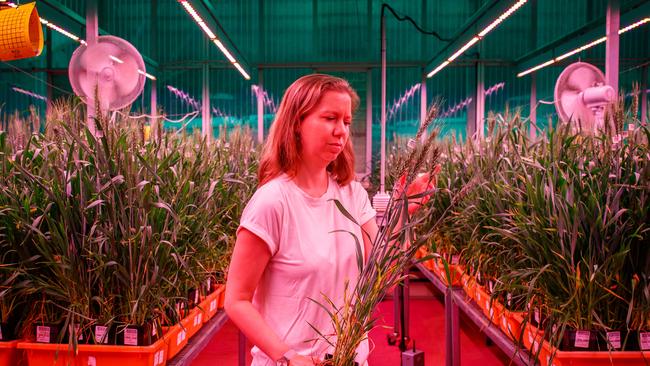
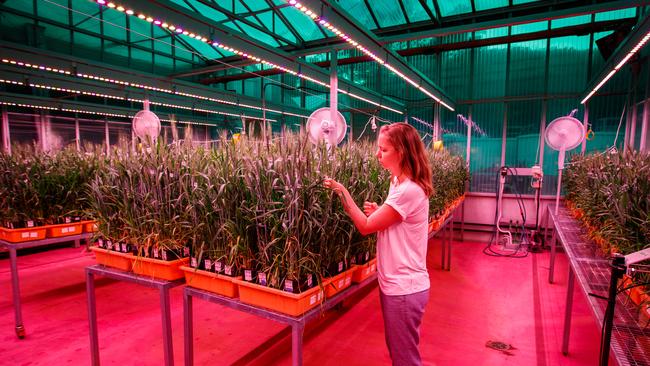
“We have fully enclosed rooms, where we can – also in addition to the light – control watering, and weigh the plants we have on conveyor systems, where we take photographs on a daily basis,” Prof Berger said.
So while bushwalkers are taking photos of the building’s exterior, scientists are taking photos that penetrate beneath the surface of the plants, to examine their cellular makeup and performance.



